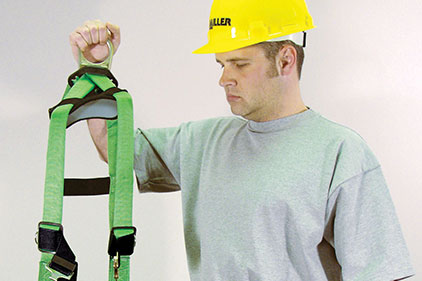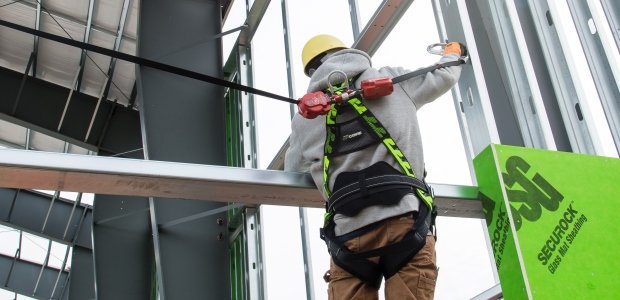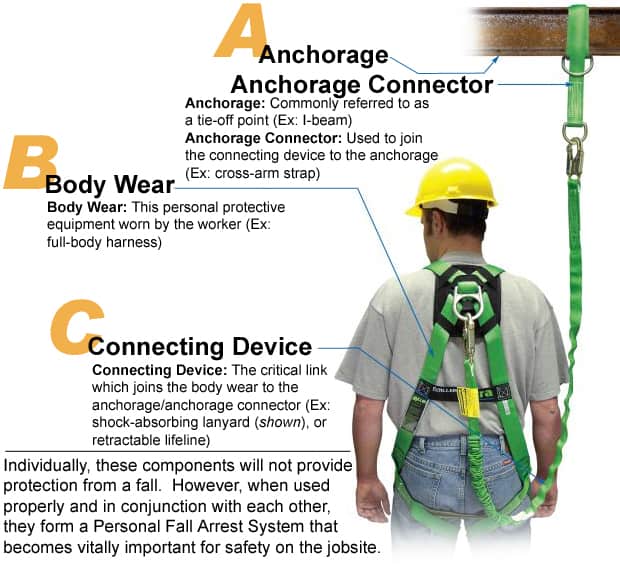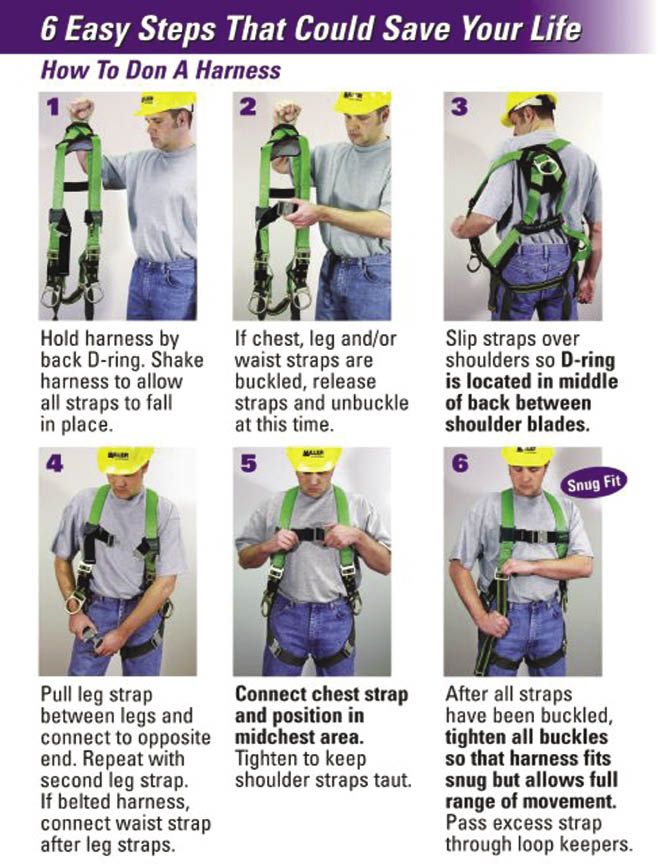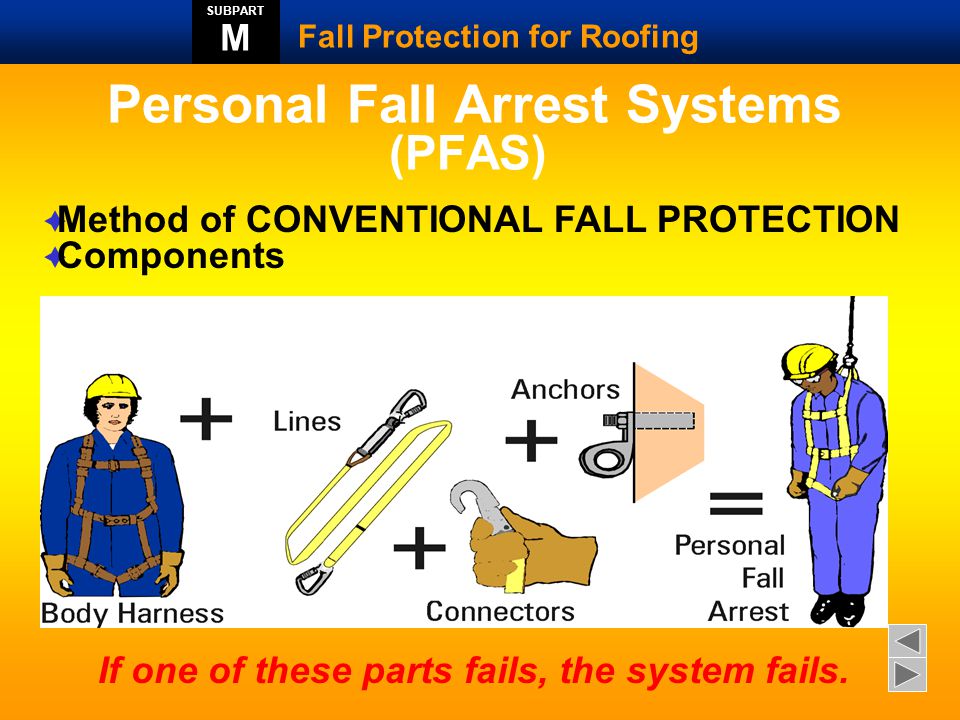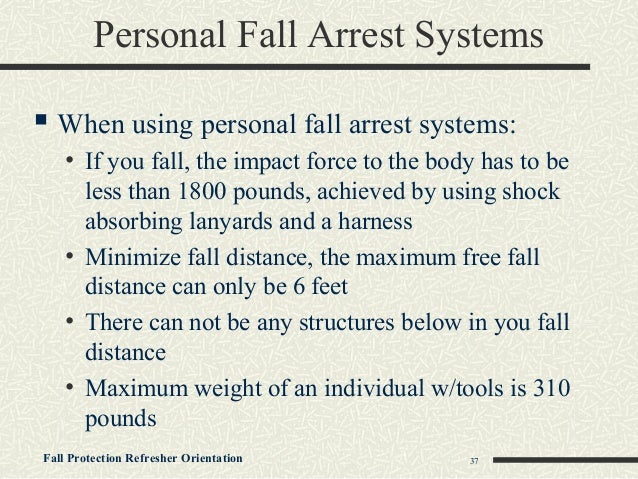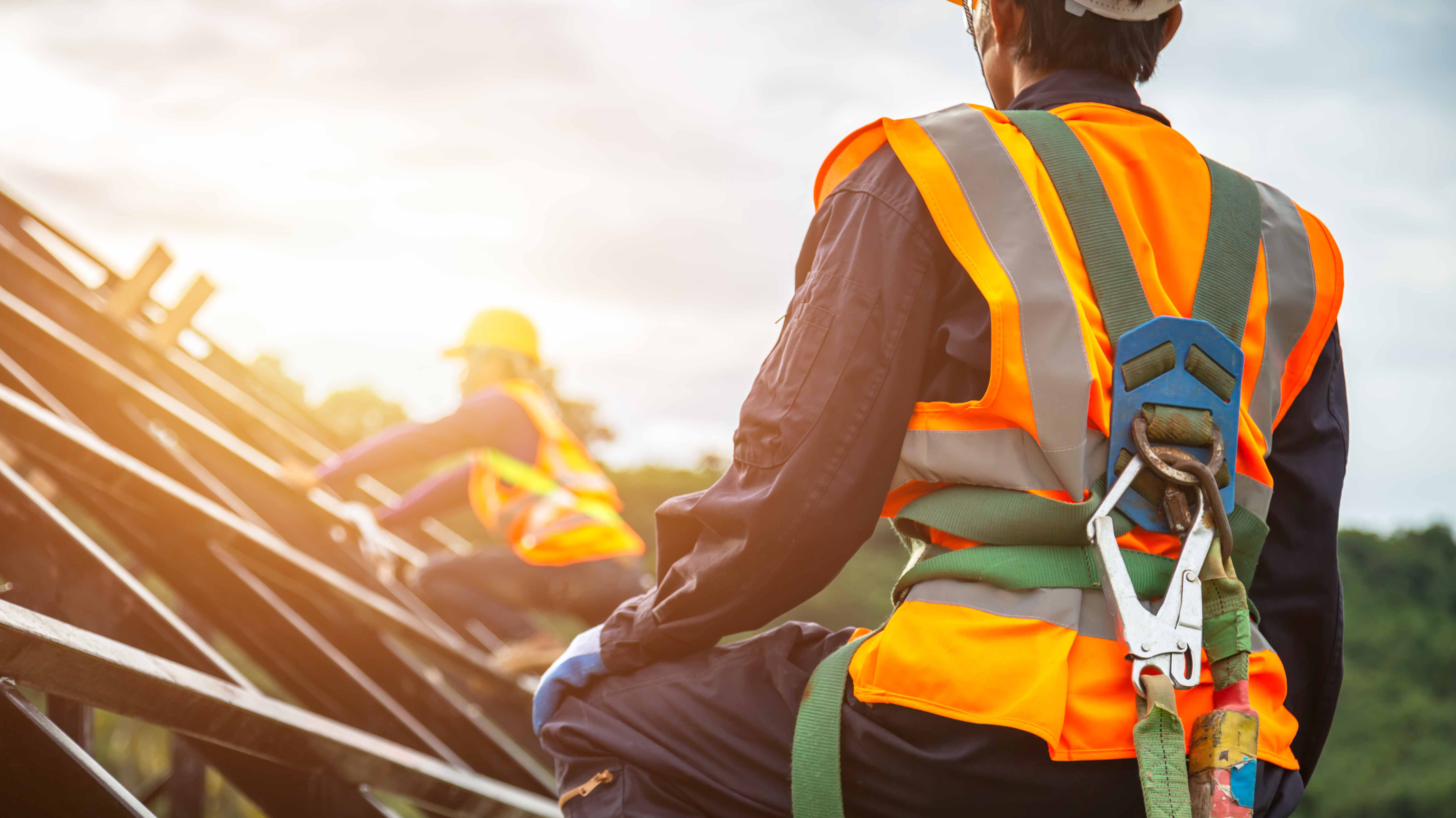A fall restraint system consists of the equipment used to keep an employee from reaching a fall point such as the edge of a roof or.
Personal fall arrest system must be inspected for damage.
Personal fall arrest systems shall be inspected prior to each use for mildew wear damage and other deterioration.
18 personal fall protection systems must be inspected before initial use during each workshift for mildew wear damage and other deterioration and defective components must be removed from service.
Before webbing used for lifeline lanyard and harness ropes and straps must be made of fibers.
Any significant defect tears cuts abrasions mold undue stretching alterations or additions which might affect its efficiency.
Damage due to deterioration.
As required by 1910 140 c 21 when personal fall arrest systems are used special consideration must be given to rescuing an employee promptly should a fall occur.
These are most commonly used in the construction industry but may apply to many other situations where employees must work at heights.
19 ropes belts lanyards and harnesses used for personal fall protection must be compatible with all connectors used.
Defective components shall be removed from service.
However an effective fall protection system inspection can be completed in four simple steps.
Adhere to osha and ansi standards osha 1910 and 1926 state that personal fall arrest systems must be inspected before each use for wear damage and other deterioration and defective components shall be removed from service.
Personal fall protection systems must be inspected before initial use during each workshift for mildew wear damage and other deterioration and defective components must be removed from service.
Personal fall arrest systems must be inspected for damage each use.
It is important for you to understand the difference between a fall arrest system and fall restraint system.

